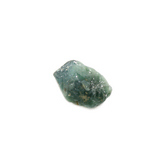Alexandrite Crystal Definitions
Alexandrite

Alexandrite is a variety of chrysoberyl, which is usually found with the pleochroic (exhibiting different colours in different directions when viewed via transmitted light) property.
The mineral exhibits the colour green by sunlight and red-
The attributes of chrysoberyl apply to alexandrite; the following properties are
in addition to those listed under chrysoberyl.
Recently, rare alexandrite crystals,
configured as twins and triplets, have been found in Africa.
These crystals have been used to provide for the synthesis between the third-
Use of these crystals can help one to return to the origin of time and to connect
with the beginning of ones development; this facilitates the understanding of, and
the sensitivity to, that which remains to be learned and provides for insight into
the effortless way to attain higher realization.
Alexandrite is a rare gemstone regarded
as having regenerative power.
It enhances the rebirth of both the inner and the outer self, providing impetus to expedite the changing of ones world while producing the qualities of expansiveness, creativity, and awareness in the realm of manifestation.
The energy of the crystalline form is especially conducive to the art of manifestation.
It
has been used in the treatment of disorders of the spleen, testicles, and pancreas,
and in the regeneration of neurological tissue on the cellular level.
It has helped to improve dis-